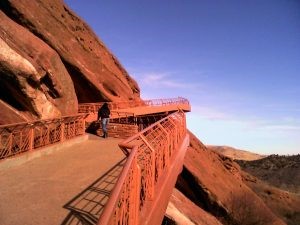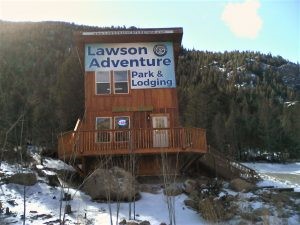There are a few different routes for employment that an insurance claims adjuster can use: become a staff adjuster, independent adjuster, or a public adjuster. A staff adjuster works full-time for one insurance adjuster firm exclusively. An independent insurance adjuster handles claims for multiple firms. A public insurance adjuster, conversely, is paid directly by the policyholder. You will want to determine what your insurance adjusting career interest is.
Being a staff adjuster for an insurance group or firm
generally means you are salaried, and you’ll receive benefits like a pension,
life and health insurance, and continuing education training. An independent insurance adjuster works as a
contractor for multiple insurance firms or third-party administrators. These
people are sometimes referred to as “catastrophe claims adjusters” because they
are the ones on the ground after major weather events and emergencies. Public insurance adjusters work on behalf of
policyholders directly. They will help businesses or individuals file an
insurance claim if a proposed settlement from an insurer is seen as unfit. While being a staff adjuster is a steady
40-hour-per-week job, the independent and public routes offer more flexibility.
If it’s the busy season, you could work well over 40 hours per week, but you
could work considerably fewer hours during less busy times. It is well documented that Independent
Insurance adjusters make in excess of $100,000 a year with the right education,
contacts and tools.
Depending on what state you live in, you may need to take a
course and pass a licensing exam to become an insurance claims adjuster. Some
states have minimal requirements, while others require completing an insurance
licensing course and passing a licensing exam. If you live in a state that
requires adjusters to be licensed, you should get your home state license
before thinking about other licenses. If you live in a state that does not
require an adjuster license, you can legally adjust claims without taking a
licensing exam. However, many adjusters want to get out-of-state licenses that
will enable them to work throughout the country. To do this, you can get a DHS
(Designated Home State) license. What this means is an individual residing in a
state that does not require an adjuster license or does not offer their own
adjuster licensing exam may choose to designate another state as their resident
or “home” state under the Designated Home State (DHS) process. Nonresident
licensure is then based on that qualification.
States that require licenses likely also require continuing
education credits for adjuster license renewal. Continuing education (CE)
credits can be earned from live or online courses. Occasionally, CE can also be
earned from employee-provided training sessions, or by publishing articles or
giving lectures related to the insurance claims industry. Check with your state
to find out what CE is required and how you can fulfill the requirements in
your state.
If you like investigative work, crunching numbers, and
negotiating settlements, you could have a bright future as an insurance claims
adjuster. Regardless of whether you are interested in a steady 9 to 5 job, or
would prefer to choose when and how much you work, there’s an insurance claims
career path that is right for you.
Adjusting Online has a wealth of knowledge and can give you
some great tips and advice as you embark on a very rewarding career as an
Insurance Adjuster.
The great thing about insurance adjusting is that it is a
recession-proof industry. While many
industries are being affected negatively with government mandated shutdowns or
even an economic recession; independent insurance adjusters are an essential
group who will always have jobs in today’s society. Individuals rely on it, businesses rely on
it, and banks and lending institutions absolutely require it.
Adjusting Online can provide you everything you need to
start your career in the Insurance Adjusting Industry with a solid foundation
from veteran instructors. Whether you
need educational information from novice-level to more advance training as a
highly-trained professional all bases will be covered allowing you to come out with
the knowledge to tackle the industry head-on.
The best part about this education is that you can complete the needed
courses from home or even your local coffee shop just by visiting https://www.adjustingonline.com/ or
emailing info@adjustingonline.com.





 You immediately identify Red Rocks as you pass it in the distance driving through 470 onto I-70 W. For those who have never made this journey, we highly suggest touring through. Gliding over the city of Golden, scouring the land below as if an eagle, your turn begins the journey ever upward into the mountains.
You immediately identify Red Rocks as you pass it in the distance driving through 470 onto I-70 W. For those who have never made this journey, we highly suggest touring through. Gliding over the city of Golden, scouring the land below as if an eagle, your turn begins the journey ever upward into the mountains. As you carry on, you reach a grand opening view of white peaked mountains in the distance ahead and the amazing Buffalo Overlook Wildlife Refuge to your right. It’s no coincidence this site is located near the road leading to
As you carry on, you reach a grand opening view of white peaked mountains in the distance ahead and the amazing Buffalo Overlook Wildlife Refuge to your right. It’s no coincidence this site is located near the road leading to  Beyond the buffaloes, you reach a grand, sweeping view of the mountains which no photo can do justice. Further, you set sail through a sea of trees – eventually arriving at the beginning of Clear Creek County. In Clear Creek you can find a noticeably large antique shop and small town looking out from the mountain slopes.
Beyond the buffaloes, you reach a grand, sweeping view of the mountains which no photo can do justice. Further, you set sail through a sea of trees – eventually arriving at the beginning of Clear Creek County. In Clear Creek you can find a noticeably large antique shop and small town looking out from the mountain slopes. the steepest slopes into the side of the highest mountain. Your reward as you masterfully make the descent down the hillside is a trip the mouth of a mountain in the Veteran Memorial Tunnels, the small historic town of Idaho Springs on the other side. Even through it is tough to see going into Idaho Springs, there is a beautiful landmark awaiting. The Bridal Veil Falls offer enjoyable hiking and breathtaking views from the other side of I-70.
the steepest slopes into the side of the highest mountain. Your reward as you masterfully make the descent down the hillside is a trip the mouth of a mountain in the Veteran Memorial Tunnels, the small historic town of Idaho Springs on the other side. Even through it is tough to see going into Idaho Springs, there is a beautiful landmark awaiting. The Bridal Veil Falls offer enjoyable hiking and breathtaking views from the other side of I-70. You may want to stop for lunch at the many options available or stock up on food from the local Safeway if you’re planning a long stay in one of the
You may want to stop for lunch at the many options available or stock up on food from the local Safeway if you’re planning a long stay in one of the  When you arrive at Lawson Adventure Park & Resort, don’t forget to grab the bucket of s’more supplies available in the lodge.
When you arrive at Lawson Adventure Park & Resort, don’t forget to grab the bucket of s’more supplies available in the lodge.